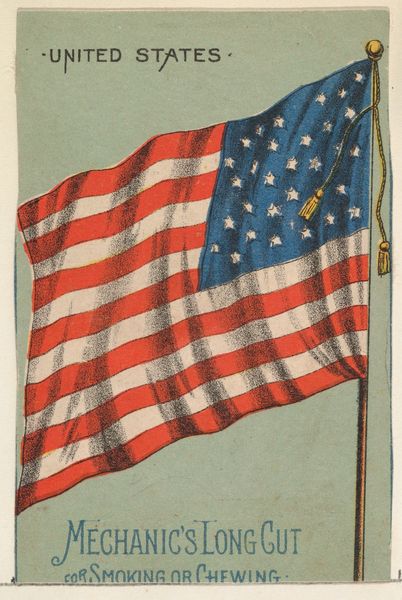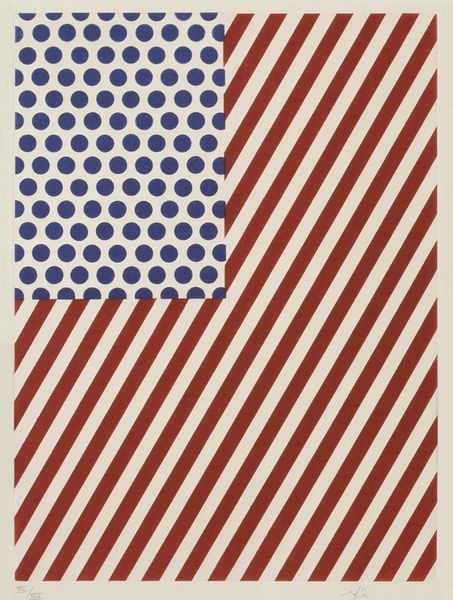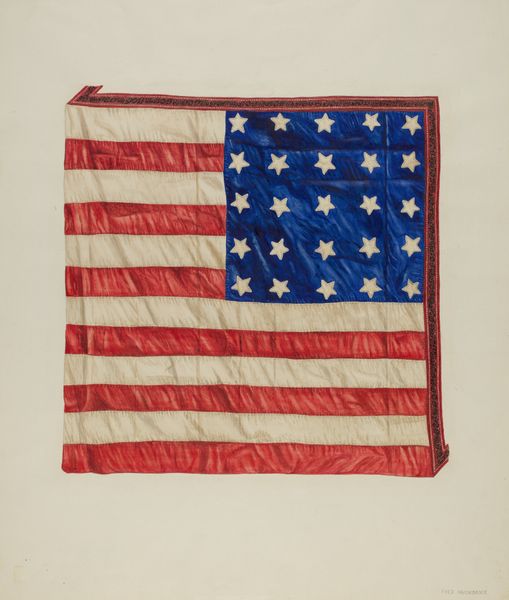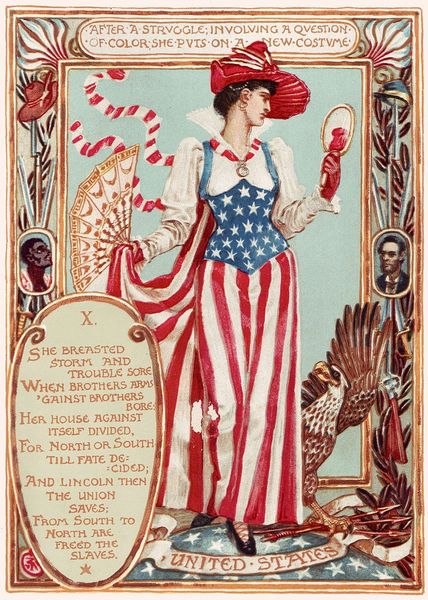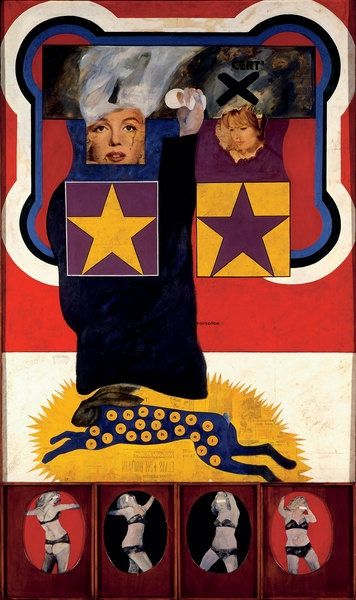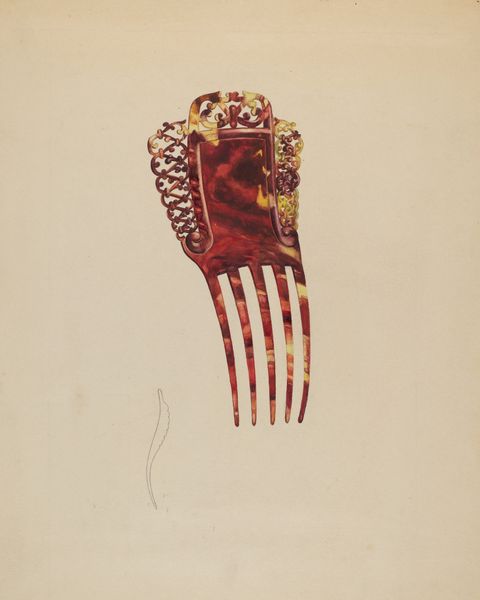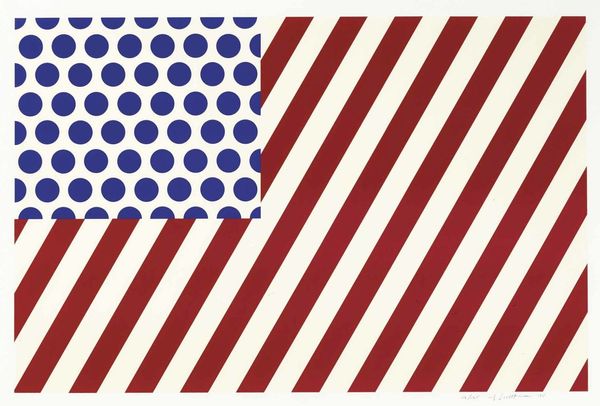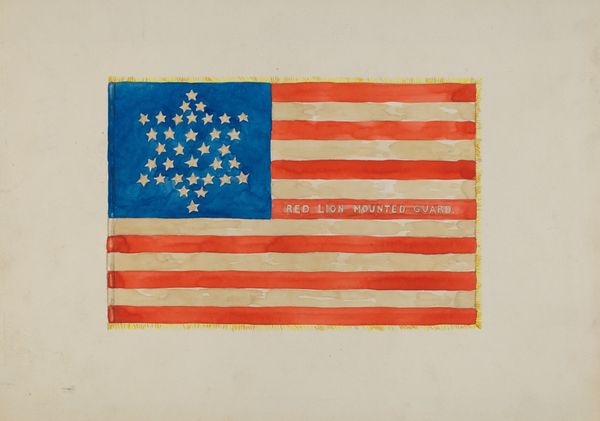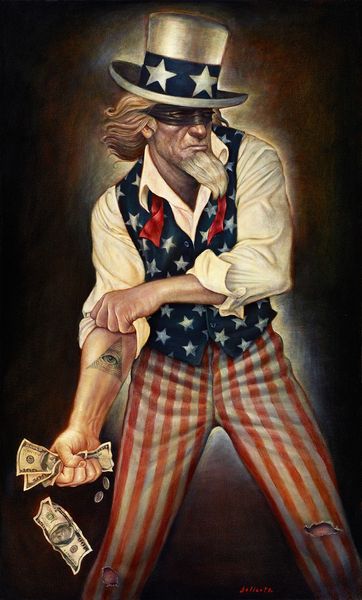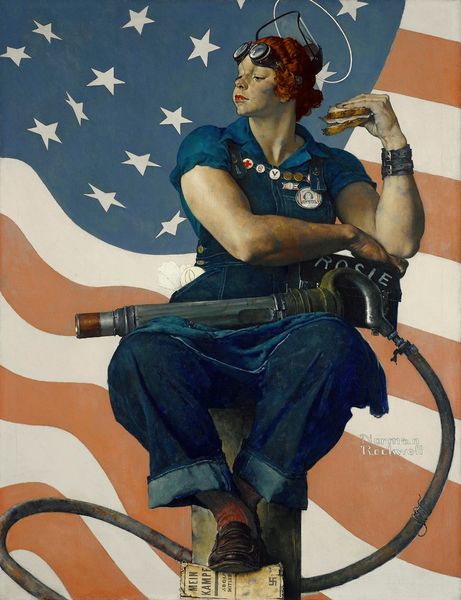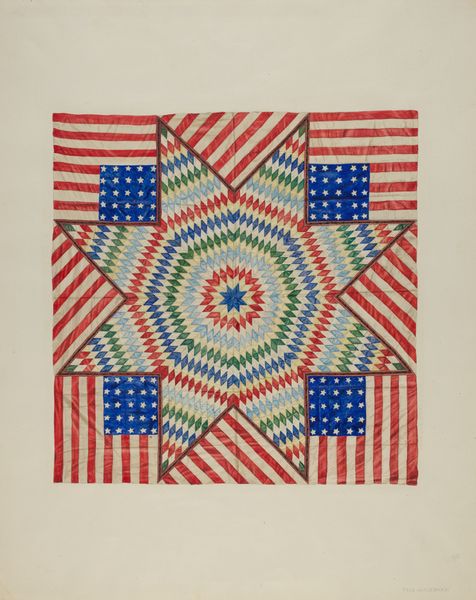
Copyright: Modern Artists: Artvee
Curator: This screenprint before us, dating from 1977, is titled "Henrietta M." and comes to us from the hand of Robert Indiana, known for his Pop Art explorations of language and image. Editor: It immediately strikes me with its clean lines and bold blocks of color, very flat, almost graphic. It’s clearly representational, yet simplified to the point of abstraction. Curator: Precisely. The geometric rendering underscores the visual impact. Notice how Indiana utilizes the red, white, and blue – a clear nod to American identity. The word "VOTE" is prominently displayed, suggesting themes of citizenship and political participation. Editor: And this headless figure—we can assume that “Henrietta M” is the subject’s name—is rather unnerving, though clearly meant to convey an iconic status. The stars and stripes become not just symbols but active elements shaping her identity and struggle. Curator: Yes, Henrietta M. likely represents a suffragette, those women who fought tirelessly for the right to vote. The figure is surrounded by the visual rhetoric of patriotism intertwined with the plea for enfranchisement. It speaks to a critical moment in American history when women’s voices sought recognition. Editor: The layering is also quite considered: how each stripe and curve builds visual tension. The flat aesthetic pushes the piece to a more intellectual space rather than one rooted in straightforward emotional affect. Curator: But that absence of clear emotion through visible brushstrokes—typical in Indiana’s Pop style—pushes us to consider how cultural memory operates through image. Henrietta, though faceless, gains power as a symbol of resilience. The work prompts a question: How are images invested with cultural memory and do these figures echo through the passage of time? Editor: The composition and symbolism certainly lock this artwork firmly in the American Pop Art idiom. The formal elements all harmonize to create an instantly recognizable icon—very much of its time, yet still visually intriguing. Curator: Ultimately, I think this artwork captures a key period of socio-political struggle, using simplified imagery and symbolism. It asks us to remember figures like Henrietta who were pivotal in changing the landscape of democracy. Editor: I see it as an accomplished play with form and color that captures the cultural zeitgeist. By stripping away nuance, Indiana leaves a potent reminder of the impact visual elements have in conveying powerful, lingering concepts.
Comments
No comments
Be the first to comment and join the conversation on the ultimate creative platform.


